– 22 May, 2017
In this sense, much of the exhibition is experienced in the imagination, as one considers the connections between images, objects and mental pictures evoked by the critical-theory-as-spoken-word. Much can, and should, be made of Watson's citations by other writers in longer form pieces: as vehicles to further unpack the exhibition, establish other un/intended connections, and expand its conceptual terrain.
Geophagy - or the practice of eating dirt - names both Ruth Watson’s current exhibition at Gus Fisher Gallery and its towering central work. On first encounter, the exhibition is overwhelming in scale and citation, and hence potentially difficult to reconcile as a whole. However, its complexity rewards those willing to invest time and thought to connect the apparently disparate works and wrestle with the numerous interconnected geopolitical issues it foregrounds.
Geophagy is a playful conundrum of a title, an oblique reference which opens numerous conversations around the eclectic work on display. The title is knowingly close to the word ‘geography’, a conscious reference to the work Watson is known for, which, in broad terms, engages an expanded conception of cartography explored in a diverse range of media.
The practice of eating soil or soil-like substances such as chalk or clay occurs both in animals and humans, where it may be a normal or abnormal behaviour in pursuit of a variety of motives, from nourishment to medicine to suicide. It was widespread in ancient societies and continues in a range of rural and tribal cultures.
Geophagy (2017), is a large twisting tower of found wooden pallets adorned with a kaleidoscope of second hand clothing, along with five single-channel looped video works embedded in their drapery. It dominates the central foyer space and the exhibition as a whole, ascending to the ornamental ceiling and drawing the form and light of the gallery’s circular stained glass dome overhead down in to the installation.
The piled clothing might evoke Christian Boltanski’s Personnes (2010) and Michaelangelo Pistoletto’s Venus of Rags (1967, 1974) for some. The structure, among other readings, resembles a kind of colossal washing machine agitator (I am indebted to Allan Smith for this interpretation), with multi-coloured clothing stuck to its twisting tiers, evoking bodies caught up in a giant machine. It is a kind of sublime geopolitical monster, a giant screw both spectacular and terrifying. A metaphor for inundation and displacement, of economic and environmental refugees, migrants, the homeless.
The form may also evoke an overcrowded apartment block descending in to chaos, echoing J. G. Ballard’s Highrise. Likened also to a mountain, spiral staircase or column, it forcefully structured social interactions at the opening as visitors awkwardly circulated around it like an elephant had materialised in the room.
Yet the multitude of voices emerging from the tower’s video screens tell stories which inflect its tone: incisive critique, radical thought, individual resistance and personal reflection. The voices read excerpts from Watson’s current reading list - which though more cynical viewers may see as a veritable ‘who’s who’ of fashionable theorists, a way to bolster the exhibition’s theoretical framework - the content of the readings can’t help but get under your skin.
Theory is, of course, a creative practice. At best, a form of art as consciousness. Though since the 1960s it has exerted a growing influence on the production and reception of art to both positive and negative effect, there are times when it functions well within an art work. The appropriation of theory here enriches the piece and speaks to Watson’s role as an artist and academic consistently mining the nexus of art and research. There is a kind of earnest fandom here, a sharing of “what I’m reading at the moment”.
It is an abundant conceptual layering then, if you can distinguish one voice from another, as everyone is speaking at once. Deleuze and Guattari’s Capitalism and Schizophrenia is cited within one of the readings, an echo of this cacophonous effect. I found the multitude of voices frustrating at times, particularly given Watson’s voice in one work was so quiet as to be almost indecipherable.
Yet this audio overload and low signal-to-noise ratio can be seen as part of the work’s content, and manifests the contemporary cultural conditions she is addressing. On one of my return visits I found a flier for a local yoga class someone had left on a piece of clothing: an ironic joke perhaps, on finding ways to keep it together in an increasingly overwhelming, fragmented and uncertain world. A world where everyone seems to be anxiously selling (or buying in to) a product, an image or an idea. Perhaps ingesting earth can also help you stay grounded. Or put you in the ground.
One visitor had written something in the gallery’s comments book akin to “I didn’t realise I had to bring a dictionary to understand your work”. At least they will find plenty of reassuringly vacuous visuals elsewhere. New Zealand urgently needs more work like this: unapologetically complex, provisional, open, generous.
Among others, listening to the introduction of Hito Steyerl‘s In Defense of the Poor Image is uniquely pleasurable, and partially frames both the presentation of images and objects in Watson’s show. The accompanying video track is a screen recording of a glitching live video feed on Facebook, the indecipherable image having disintegrated in to muddy, abstract blocks of colour. Facebook’s requisite smiley face, love heart, and thumbs up ‘like’ icons float above the digital detritus and across the screen. A ‘poor’ image indeed, yet with a rich cerebral overlay.
In this sense, much of the exhibition is experienced in the imagination, as one considers the connections between images, objects and mental pictures evoked by the critical-theory-as-spoken-word. Much can, and should, be made of Watson’s citations by other writers in longer form pieces: as vehicles to further unpack the exhibition, establish other un/intended connections, and expand its conceptual terrain.
In a second dominant video, a man’s mouth appears in slow motion and close-up, chewing an ambiguous brown substance: what appears to be a chocolate sweet and yet perhaps the closest thing to soil in this installation. A well-trained female voice reads from Susan Schuppli’s Slick Images: The Photogenic Politics of Oil, meditating on televised images from the catastrophic Deepwater Horizon oil spill and “the hyperfinancialisation of the biosphere”.
A small, old Ikegami CRT television (perhaps an obsolescent relic from Elam’s Intermedia department) displays a retro video game of sweet materialism. Candies fall from above like the Tetris interface, and if successfully grabbed, enter the candy jar as the dollars rack up. “Tasty!”, “Delicious!”, “Divine!” it exclaims. You can’t eat money but it sure looks so here.
In another video, a man’s hand compresses a small rubber ‘stress ball’ with a map of the globe on its surface. The ball’s rubber memory returns it to its original shape, before it is turned over and compressed elsewhere, without rest. A voice reads from Making Kin: Anthropocene, Capitalocene, Plantationocene, Chthulucene in Donna Harraway‘s Staying With The Trouble: Making Kin in the Chthulucene.
Yet another monitor features a screen recording of the artist’s Macintosh computer as she cycles through her image bank in a Finder window in Cover Flow mode. Files flit across the screen as document icons before displaying as chunky pixelated previews. As the artist hovers over a file the resolution slowly renders in to a coherent photograph. This form of image making also reappears in moments within her single channel video in the main gallery, Unmapping the world (2017). Her images are levelled by the digital platform’s archiving and retrieval system (IMG_XXXX.JPG etc.), whether they be a high production photograph of her work, or a provisional phone camera image of an exhibition taken on the fly. I found works I had photographed the same way in travels to visit Documenta 13 in Kassel and Patrick Keiller’s 2012 exhibition The Robinson Institute at the Tate in London. It’s funny how life works sometimes, it has a way of bringing or recalling things to your attention.
Unmapping the world (2017) is a single-channel video work which, among other issues, ruminates on travel, immigration, identity and family history. Viewers can watch the piece from two soft reclining chairs reminiscent of airline seats. The video is front-projected on to a large, freestanding old-school screen atop a tripod, which exercises a strong pedagogical tone. An historic instructional film on map reading is juxtaposed with the artist’s own recordings, including aerial footage shot through a jumbo jet’s passenger window, contrasting neatly with a glass of water sitting on what appears to be a tray table inside the plane. The volume inside the glass tilts gently as the plane passes over vast bodies of unseen water. The autobiographical narration examines her Northern Irish heritage (again I find myself specifically in the work just as many other Pakeha might, immigration to New Zealand from elsewhere being our shared story). While revealing she has not travelled to Ireland, Watson traces her family history and its journey to her being here. These personal reflections are sharply contrasted with the thorny macro-level issues of pronatalism and population growth, engaged via reference to the recent controversial appointments of extremist anti-immigrant hate group figureheads to high level positions in the Trump administration. In this light, Watson’s cartographies of the self - and by proxy, our personal histories, past and present - feel alarmingly threatened in the current geopolitical environment.
In the small gallery, nine photographs collectively entitled Transient Global Amnesia (2017), depict fragments of paper maps shot from above, imitating the maps’ aerial view. They are in various states of decay, the wet weather disintegrating the paper in to the pavement. In one image a circular patch of paper is draped over minute rises in the gravel and bitumen, and eaten away in the valleys, summoning a reference to map/territory relationships. In an inversion of geophagy, another image depicts the map as if almost entirely consumed by the Earth itself. The process has left nothing but tiny dilapidated spots of paper which find an unusual congruence in the gallery’s flecked stone floor.
Also located in the small gallery is The Surface of Things (2015), three single-channel looped video works screened on three LCD monitors butted together, made during a Fulbright-Wallace Residency at Headlands Center for the Arts outside San Francisco. They contrast footage traversing a wooden studio floor (from a former military barracks now used by Headlands), tracing years of artists’ accumulated paint drips reminiscent of a Jackson Pollock, and a decommissioned Nike Missile Site nearby. A third screen displays a poetic rolling text written by Watson, considering the nature of surfaces and her residency experience. An excerpt reads:
This map of my surroundings misses much.
The animals, so much a part of daily life here
don’t appear, nor the people.
No monsters in the margins,
Just cartography’s regular absences.
It bothers with dirt,
bypassing the brand spanking new.
Dirt reminds us where we are
and what’s possible,
the past and future combined,
what a map used to be.
Now the map is expected to reduce conjecture
and shift the boundary from the uncertain
towards certainty.
There’s a now-obsolete definition
of the verb to map lost to English.
It meant to bewilder, to confuse.
Certainty is not the only story.
Through a dynamic range of work, there is an earnest attempt here to address and embrace our present moment in all its contradictions and indeterminacy: a presentation of art as research which appears inherently provisional in order to reflect its multi-faceted and evolving nature. Watson’s Elam School of Fine Arts colleague, Senior Lecturer Allan Smith opened the exhibition with a fitting way to end:
And who’s to say where the therapeutic value in Ruth’s geophagy starts and stops, and where the purely formal and aesthetic one begins? Some people eat walls - some take vitamin supplements, some make art, and others think about it - we all consume, digest, excrete actually and virtually on a semi-permanent basis. We are all in this together.
Emil McAvoy
Recent Comments
John Hurrell
Here is an incredible video by Ruth Watson that deserves to be more widely known. https://www.circuit.org.nz/film/unmapping-the-world
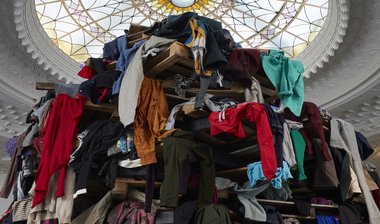

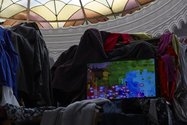

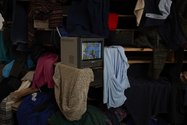
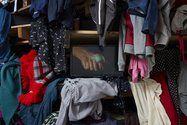
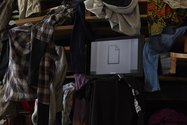

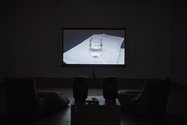
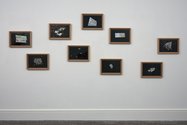
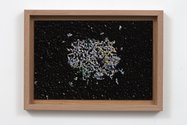
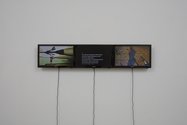
 Two Rooms presents a program of residencies and projects
Two Rooms presents a program of residencies and projects Advertising in this column
Advertising in this column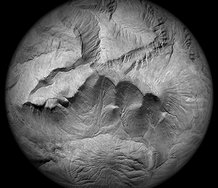
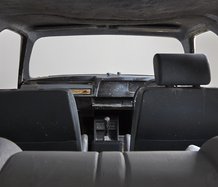
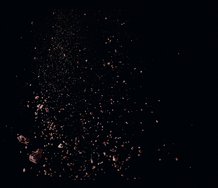
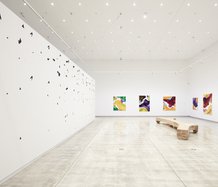
This Discussion has 1 comment.
Comment
John Hurrell, 9:32 a.m. 30 May, 2021 #
Here is an incredible video by Ruth Watson that deserves to be more widely known. https://www.circuit.org.nz/film/unmapping-the-world
Participate
Register to Participate.
Sign in
Sign in to an existing account.